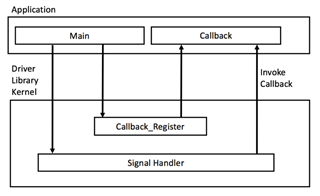I've been trying to get used TI series uC. When I reviewed interrupt handling. uC offer callback notification functions
to allow implementing user design functions. Writing user codes into these functions breaks top-down design and
create circular dependency. I wonder that are there any register callback function in order to call our custom designed callback from application layer to low layers.



